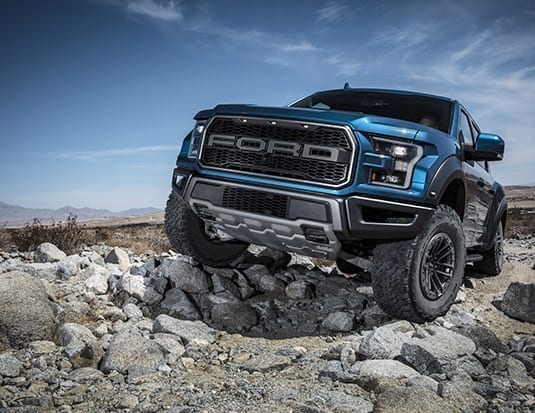Customers who want to install oversized tires on their pickup trucks, should understand what they’re getting into.
Modern vehicles are increasingly complex. Even the smallest of modifications have the potential to disrupt communications between vehicle systems. Formation Xtreme trainer, Pierre Henri, shared a remarkable, eye-opening example during his Monaco Group conference workshop.
Challenging diagnosis
“Although the late-model pickup truck’s check-engine light was on,” Henri recalled, “there was no identifiable cause associated with the warning light. I eventually arrived at a diagnosis by troubleshooting the engine’s crankshaft position sensor and associating it to the tires. The vehicle was mounted on a very aggressive set of tires, which caused a vibration so severe that it affected the engine monitoring system, which triggered the diagnostic code.”
These extremely oversized tires will also have a negative effect on the vehicle’s ride comfort and handling, but with the incredibly sophisticated nature of today’s modern vehicles, seemingly unrelated vehicle systems may be affected, thus impacting the vehicle’s performance.
“In this instance, the consequences were limited to an engine with a slightly rougher idle or increased emissions,” explained Henri. “This is an eloquent illustration as to the level of sophistication and precision attained by modern vehicle manufacturers.”
ADAS awareness
Another important factor to consider Big Expectations PHOTOS MICHEL BEAUNOYER, FORD Customers who want to install oversized tires on their pickup trucks, should understand what they’re getting into. — MICHEL BEAUNOYER regarding oversized tires or suspension modifications is the impact these choices may have on the vehicle’s advanced driver-assistance systems (ADAS).
“Advanced driver-assistance systems need to be recalibrated whenever the vehicle ride height changes,” insists Hunter Engineering Regional Manager for Quebec, Alexandre Thivierge. “For instance, take the cameras and lidars used for adaptive cruise control or automatic emergency braking. If these devices aren’t pointed correctly or are aimed above the surrounding traffic, they are virtually useless. Tire retailers need to be aware that they are directly responsible for the safety of their customers. They must be able to calibrate these systems or refer to experts whenever customers request tire swaps or suspension modifications that fall outside of manufacturer specifications and parameters.”
Thivierge believes the number of vehicles equipped with ADAS will continue to grow. Insurance companies are thrilled, as these technologies reduce both the number and severity of collisions, which in turn lowers repair costs. This industry expert believes tire retailers need to bring themselves up to speed.



